
|
The brightness evolution has slowed down just before the perihelion passage. But now it is so bright as 6.6 mag (Sept. 23, Marco Goiato). In the Southern Hemisphere, it is observable in the evening sky until mid October. In the Northern Hemisphere, it is not observable until late December when the comet will fade down to 13 mag.
Date(TT) R.A. (2000) Decl. Delta r Elong. m1 Best Time(A, h)
Sept.27 13 58.30 -30 10.4 0.687 0.626 38 5.7 19:24 ( 66, 19)
Oct. 4 14 52.25 -25 0.9 0.937 0.638 38 6.4 19:30 ( 73, 20)
|

|
Appearing in the morning sky again. Now it is so bright as 7.1 mag (Sept. 23, Marco Goiato). It will be observable in good condition in the Southern Hemisphere after this. But it keeps low in the Northern Hemisphere.
Date(TT) R.A. (2000) Decl. Delta r Elong. m1 Best Time(A, h)
Sept.27 8 38.06 -7 49.8 1.431 1.169 53 6.9 4:18 (258, 29)
Oct. 4 8 26.03 -13 47.7 1.291 1.222 62 6.8 4:07 (259, 38)
|
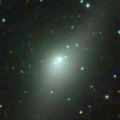
|
The brightness evolution has slowed down just before the perihelion passage. But now it is bright as 10.3 mag (Sept. 23, Chris Wyatt). It keeps observable in good condition until early November in the Southern Hemisphere. In the Northern Hemisphere, it is observable only in the evening low sky from late September to mid November. But it will be observable in excellent condition after 2015 January while the comet will be fading. It will pass extremely close to Mars on Oct. 19.
Date(TT) R.A. (2000) Decl. Delta r Elong. m1 Best Time(A, h)
Sept.27 17 54.48 -44 6.8 1.138 1.458 85 8.7 19:24 ( 60, 66)
Oct. 4 17 44.65 -36 36.4 1.281 1.433 76 8.9 19:30 ( 76, 58)
|

|
It brightened up to 6.0 mag from July to August (July 24, Maik Meyer). Now it is fading. But it is bright as 9.1 mag still now (Sept. 23, Maik Meyer). It keeps observable in good condition until November in the Southern Hemisphere, or December in the Northern Hemisphere.
Date(TT) R.A. (2000) Decl. Delta r Elong. m1 Best Time(A, h)
Sept.27 19 13.74 14 7.7 1.172 1.729 105 9.9 19:24 (169, 40)
Oct. 4 19 9.96 9 32.3 1.393 1.830 98 10.7 19:30 (155, 42)
|

|
It brightened rapidly in outburst in mid October in 2013. It will be fading gradually after this. But it is bright as 11.0 mag still now (Sept. 18, Chris Wyatt). In the Southern Hemisphere, it keeps observable in good condition for a long time until the comet fades out. In the Northern Hemisphere, it keeps extremely low after this.
Date(TT) R.A. (2000) Decl. Delta r Elong. m1 Best Time(A, h)
Sept.27 21 36.88 -51 17.4 2.549 3.144 117 11.6 21:12 ( 0, 74)
Oct. 4 21 36.48 -50 55.1 2.691 3.211 112 11.8 20:45 ( 0, 74)
|

|
Now it is 14.8 mag (Sept. 14, Toshiyuki Takahashi). In the Northern Hemisphere, it is expected to be observable at 12-13 mag in excellent condition from 2014 summer to 2015 spring. But actually, it is fainter than this ephemeris. In the Southern Hemisphere, it will locate low around the highlight.
Date(TT) R.A. (2000) Decl. Delta r Elong. m1 Best Time(A, h)
Sept.27 8 42.91 24 17.8 2.370 2.010 57 13.2 4:18 (233, 7)
Oct. 4 8 59.88 23 41.0 2.307 2.005 60 13.1 4:07 (234, 8)
|
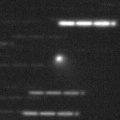
|
New bright comet. Now it is 12.7 mag and visible visually (Sept. 23, Chris Wyatt). It will approach to the earth in December and January, and it is expected to brighten up to 8 mag. In the Southern Hemisphere, it keeps observable in excellent condition until late January. In the Northern Hemisphere, it keeps extremely low until mid December. But after that, it will be observable in excellent condition.
Date(TT) R.A. (2000) Decl. Delta r Elong. m1 Best Time(A, h)
Sept.27 7 42.15 -41 54.2 2.285 2.205 72 13.7 4:18 (295, 54)
Oct. 4 7 49.12 -42 11.2 2.174 2.131 74 13.5 4:07 (295, 56)
|

|
Now it is 14.3 mag and visible visually (Sept. 22, Seiichi Yoshida). It keeps observable for a long time after this while the comet will be fading gradually.
Date(TT) R.A. (2000) Decl. Delta r Elong. m1 Best Time(A, h)
Sept.27 8 37.29 10 45.7 2.428 2.028 55 13.9 4:18 (242, 18)
Oct. 4 8 49.65 9 40.6 2.401 2.066 58 14.0 4:07 (243, 19)
|
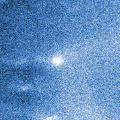
|
New bright comet. Now it is 14.0 mag (Sept. 18, Ken-ichi Kadota). It keeps 13-14 mag until 2015 spring. But it keeps locating low in the morning sky. In the Southern Hemisphere, it is too low to observe until December.
Date(TT) R.A. (2000) Decl. Delta r Elong. m1 Best Time(A, h)
Sept.27 9 38.84 15 42.1 2.172 1.574 41 14.2 4:18 (248, 3)
Oct. 4 10 2.81 14 14.7 2.107 1.532 42 14.0 4:07 (251, 3)
|

|
No bright outburst was reported between July and September. It is already extremely low in the Northern Hemisphere. It will be unobservable in late October also in the Southern Hemisphere.
Date(TT) R.A. (2000) Decl. Delta r Elong. m1 Best Time(A, h)
Sept.27 15 42.93 -27 46.0 6.603 6.108 56 14.0 19:24 ( 80, 38)
Oct. 4 15 47.66 -27 52.2 6.689 6.106 50 14.0 19:30 ( 76, 32)
|

|
Now it is 14.0 mag (Sept. 13, Mitsunori Tsumura). It keeps bright as 13-14 mag for a long time from 2013 to 2014.
Date(TT) R.A. (2000) Decl. Delta r Elong. m1 Best Time(A, h)
Sept.27 20 28.50 -29 56.0 2.590 3.186 118 14.1 20:04 (180, 85)
Oct. 4 20 30.46 -29 30.4 2.686 3.195 111 14.2 19:39 (180, 84)
|
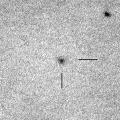
|
Now it is 14.2 mag (Aug. 28, Jakub Cerny). Getting brighter than originally expected, and it is already visible visually. It is expected to brighten up to 4 mag from autumn to winter in 2015. It is observable in good condition in the Southern Hemisphere until the highlight, or in the Northern Hemisphere after the highlight.
Date(TT) R.A. (2000) Decl. Delta r Elong. m1 Best Time(A, h)
Sept.27 23 6.66 -22 59.8 4.522 5.418 150 14.3 22:41 (180, 78)
Oct. 4 22 59.80 -23 40.6 4.516 5.350 143 14.2 22:07 (180, 79)
|

|
Now it is 14.7 mag (Sept. 22, Seiichi Yoshida). It keeps 13-14 mag and observable in good condition in the Northern Hemisphere for a long time from 2013 to 2014. It locates low in the Southern Hemisphere. The split fragment of 18 mag was observed on Aug. 27 (F. Manzini, V. Oldani, A. Dan, R. Crippa, R. Behrend), and it keeps visible at 17.8 mag still on Sept. 21 (L. Arnold).
Date(TT) R.A. (2000) Decl. Delta r Elong. m1 Best Time(A, h)
Sept.27 23 19.41 44 52.8 3.491 4.259 134 14.6 22:54 (180, 10)
Oct. 4 23 9.14 42 37.2 3.512 4.295 136 14.7 22:16 (180, 12)
|

|
Now it is 14.2 mag (Aug. 28, Jakub Cerny). It is observable at 14 mag in excellent condition until November.
Date(TT) R.A. (2000) Decl. Delta r Elong. m1 Best Time(A, h)
Sept.27 23 51.62 -5 48.3 1.340 2.335 170 14.7 23:26 (180, 61)
Oct. 4 23 49.23 -6 19.1 1.377 2.354 163 14.8 22:57 (180, 61)
|

|
Now it is 13.3 mag (Sept. 22, Seiichi Yoshida). It keeps bright at 13-14 mag for a long time until 2014.
Date(TT) R.A. (2000) Decl. Delta r Elong. m1 Best Time(A, h)
Sept.27 18 20.75 -8 36.3 6.738 6.840 91 14.7 19:24 (138, 57)
Oct. 4 18 20.02 -9 16.9 6.883 6.865 84 14.7 19:30 (125, 52)
|
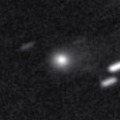
|
Now it is 14.9 mag (Aug. 12, Taras Prystavski). It is expected to brighten up to 13 mag and to be observable in good condition in 2015. It becomes unobservable temporarily from October to January.
Date(TT) R.A. (2000) Decl. Delta r Elong. m1 Best Time(A, h)
Sept.27 14 43.75 -6 47.0 4.620 3.878 37 14.7 19:24 ( 92, 15)
Oct. 4 14 52.11 -7 27.9 4.646 3.850 33 14.7 19:30 ( 88, 11)
|

|
Big asteroid discovered in 1906. It suddenly showed the cometary activity on Dec. 11, 2010, probably due to an impact of a small object. It has already turned to be stellar.
Date(TT) R.A. (2000) Decl. Delta r Elong. m1 Best Time(A, h)
Sept.27 4 58.24 19 12.2 2.954 3.403 108 14.8 4:18 (185, 36)
Oct. 4 4 58.91 19 24.2 2.861 3.404 114 14.7 4:07 (181, 36)
|

|
Now it is 15.0 mag (Sept. 14, Toshiyuki Takahashi). It keeps 15 mag for a long time from 2014 to 2015. It is observable in excellent condition in 2014 in the Southern Hemisphere, or in 2015 in the Northern Hemisphere.
Date(TT) R.A. (2000) Decl. Delta r Elong. m1 Best Time(A, h)
Sept.27 1 13.70 -35 46.8 3.329 4.149 140 14.8 0:53 ( 0, 89)
Oct. 4 1 5.18 -35 17.0 3.311 4.129 140 14.8 0:17 ( 0, 90)
|
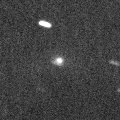
|
Now it is 14.7 mag (Aug. 31, Taras Prystavski). It will be observable at 14.5 mag in excellent condition from October to December.
Date(TT) R.A. (2000) Decl. Delta r Elong. m1 Best Time(A, h)
Sept.27 4 51.45 17 40.8 1.099 1.721 109 15.1 4:18 (183, 37)
Oct. 4 5 2.00 19 6.5 1.042 1.715 114 14.9 4:07 (182, 36)
|

|
It brightened up to 11-12 mag in 2012. It has already faded down to 14.9 mag (Aug. 12, Taras Prystavski). Now it is not observable. It will be observable at 15 mag in good condition again in 2015.
Date(TT) R.A. (2000) Decl. Delta r Elong. m1 Best Time(A, h)
Sept.27 12 0.61 -7 58.7 9.242 8.249 7 15.1 4:18 (289,-12)
Oct. 4 12 2.19 -8 13.5 9.269 8.286 9 15.1 4:07 (286, -8)
|

|
New comet. Now it is 14.8 mag (Sept. 18, Ken-ichi Kadota). It will brighten up to 14.5 mag in November. In the Northern Hemisphere, it keeps observable in good condition until the comet will fade out in next spring. In the Southern Hemisphere, it will be unobservable soon.
Date(TT) R.A. (2000) Decl. Delta r Elong. m1 Best Time(A, h)
Sept.27 6 42.92 40 4.6 1.566 1.788 85 15.5 4:18 (204, 10)
Oct. 4 6 54.89 46 5.0 1.438 1.754 90 15.2 4:07 (200, 5)
|
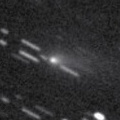
|
It brightened up to 2 mag by unusual major outburst in 2007. It is coming back now. Now it is 14.3 mag (Sept. 22, Seiichi Yoshida). In the Northern Hemisphere, it keeps observable until it fades out in 2015. In the Southern Hemisphere, it keeps extremely low after this.
Date(TT) R.A. (2000) Decl. Delta r Elong. m1 Best Time(A, h)
Sept.27 5 7.11 46 8.1 2.063 2.480 102 15.4 4:18 (185, 9)
Oct. 4 5 11.34 47 5.2 2.014 2.508 107 15.5 4:07 (183, 8)
|

|
New comet. Now it is 15.7 mag (Sept. 15, Hidetaka Sato). It keeps 15 mag from autumn to winter. It moves southwards fast in winter.
Date(TT) R.A. (2000) Decl. Delta r Elong. m1 Best Time(A, h)
Sept.27 8 14.14 27 55.5 2.027 1.831 64 15.7 4:18 (226, 9)
Oct. 4 8 27.97 24 57.1 1.952 1.818 67 15.5 4:07 (228, 12)
|
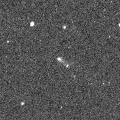
|
Now it is 13.9 mag (Sept. 22, Seiichi Yoshida). First return of a new periodic comet which brightened up to 13 mag in 2007. It was expected to brighten up to 13 mag again and observable in good condition from summer to autumn in 2014. But actually, it is fainter than expected.
Date(TT) R.A. (2000) Decl. Delta r Elong. m1 Best Time(A, h)
Sept.27 23 32.77 -14 28.7 1.324 2.296 161 15.6 23:08 (180, 69)
Oct. 4 23 30.02 -15 15.6 1.358 2.300 154 15.7 22:37 (180, 70)
|
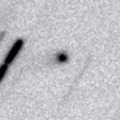
|
Now it is 16.0 mag (Sept. 2, Taras Prystavski). It is expected to brighten up to 14 mag from 2015 to 2016. It is observable in good condition in the Southern Hemisphere. It locates somewhat low in the Northern Hemisphere.
Date(TT) R.A. (2000) Decl. Delta r Elong. m1 Best Time(A, h)
Sept.27 5 26.35 -22 33.9 4.780 5.056 100 15.9 4:18 (222, 74)
Oct. 4 5 21.80 -23 11.2 4.659 5.025 105 15.9 4:07 (207, 77)
|
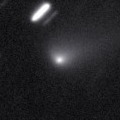
|
It brightened up to 12-13 mag from April to May. Now it is fading. It has already faded down to 15.2 mag (Aug. 12, Taras Prystavski). It will be unobservable in late October.
Date(TT) R.A. (2000) Decl. Delta r Elong. m1 Best Time(A, h)
Sept.27 15 53.43 -17 5.5 3.203 2.775 56 15.9 19:24 ( 93, 35)
Oct. 4 16 5.13 -17 39.7 3.294 2.797 52 16.0 19:30 ( 89, 31)
|
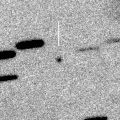
|
Now it is 16.9 mag (Sept. 19, iTelescope Observatory, Siding Spring). It keeps 14-15 mag for a long time from 2014 autumn to 2015 autumn. In the Southern Hemisphere, it keeps observable in excellent condition for a long time. In the Northern Hemisphere, it is only observable in the low sky from September to October. Then it will be unobservable until 2015 June.
Date(TT) R.A. (2000) Decl. Delta r Elong. m1 Best Time(A, h)
Sept.27 9 13.68 -24 49.5 3.248 2.702 49 16.1 4:18 (280, 31)
Oct. 4 9 16.85 -27 30.9 3.122 2.650 53 15.9 4:07 (282, 35)
|
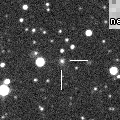
|
It was observed around 16 mag in 2014 spring. In the Northern Hemisphere, it is getting higher in the morning sky. It keeps 15-16 mag and observable in excellent condition for a long time after this, until early summer in 2015. In the Southern Hemisphere, it is not observable until mid January.
Date(TT) R.A. (2000) Decl. Delta r Elong. m1 Best Time(A, h)
Sept.27 11 6.39 39 53.4 4.162 3.512 44 16.1 4:18 (238,-26)
Oct. 4 11 19.12 39 0.9 4.116 3.509 46 16.0 4:07 (239,-25)
|
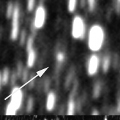
|
Now it is 16.2 mag (Aug. 24, Jean-Francois Viens). Distant object, but it keeps observable at 14 mag for a long time from 2015 to 2016.
Date(TT) R.A. (2000) Decl. Delta r Elong. m1 Best Time(A, h)
Sept.27 18 54.25 -5 28.4 6.244 6.494 100 16.1 19:24 (154, 58)
Oct. 4 18 55.76 -5 49.0 6.319 6.464 93 16.1 19:30 (141, 55)
|
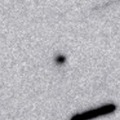
|
Now it is 16.1 mag (Sept. 2, Taras Prystavski). It keeps observable at 15-16 mag for a long time from 2015 to 2016. In the Northern Hemisphere, it is observable in excellent condition. It locates somewhat low in the Southern Hemisphere.
Date(TT) R.A. (2000) Decl. Delta r Elong. m1 Best Time(A, h)
Sept.27 4 8.39 20 46.3 5.338 5.897 119 16.3 3:47 (180, 34)
Oct. 4 4 6.05 21 20.7 5.218 5.873 126 16.3 3:17 (180, 34)
|

|
Now it is 17.4 mag (Sept. 12, E. Bryssinck). It will brighten up to 15 mag and will be observable in excellent condition from November to February in the Northern Hemisphere. It locates somewhat low in the Southern Hemisphere.
Date(TT) R.A. (2000) Decl. Delta r Elong. m1 Best Time(A, h)
Sept.27 6 28.36 30 32.8 2.362 2.525 87 16.6 4:18 (205, 20)
Oct. 4 6 37.34 30 20.8 2.269 2.517 92 16.4 4:07 (203, 20)
|
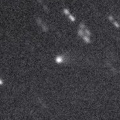
|
Now it is 15.6 mag (Sept. 13, Mitsunori Tsumura). It will brighten up to 15 mag and will be observable in excellent condition from winter to spring.
Date(TT) R.A. (2000) Decl. Delta r Elong. m1 Best Time(A, h)
Sept.27 22 32.92 -20 24.5 0.881 1.807 147 16.6 22:08 (180, 75)
Oct. 4 22 26.95 -20 8.9 0.874 1.760 139 16.4 21:34 (180, 75)
|
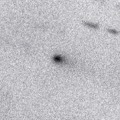
|
It brightened up to 14.6 mag in summer (July 8, Hidetaka Sato). Now it is fading. It has already faded down to 17.2 mag (Sept. 15, Hidetaka Sato). The condition is good in the Northern Hemispehre. It keeps observable until next February when the comet will be fainter than 18 mag. It locates somewhat low in the Southern Hemisphere.
Date(TT) R.A. (2000) Decl. Delta r Elong. m1 Best Time(A, h)
Sept.27 7 43.74 17 21.2 1.964 1.857 68 16.4 4:18 (228, 22)
Oct. 4 7 55.82 16 43.6 1.935 1.898 72 16.5 4:07 (227, 23)
|
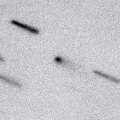
|
Now it is 16.3 mag (Aug. 31, Taras Prystavski). In the Northern Hemisphere, it keeps observable in good condition while the comet will be fading gradually. In the Southern Hemisphere, it keeps extremely low.
Date(TT) R.A. (2000) Decl. Delta r Elong. m1 Best Time(A, h)
Sept.27 8 15.88 31 6.3 1.868 1.705 64 16.6 4:18 (224, 7)
Oct. 4 8 34.55 31 27.1 1.843 1.736 68 16.8 4:07 (224, 6)
|

|
New comet. It will approach to the sun down to 0.3 a.u. in 2015 July, and it is expected to be bright. Now it is 16.6 mag (Sept. 12, K. Hills). It keeps observable while the comet will be brightening gradually until January when the comet will be 15 mag. The condition is bad after that and it will be hard to observe. But in the Southern Hemisphere, it will be observable after mid July in 2015, and keeps observable while the comet will be fading gradually. In the Northern Hemisphere, it is extremely hard to observe after 2015.
Date(TT) R.A. (2000) Decl. Delta r Elong. m1 Best Time(A, h)
Sept.27 23 33.31 -29 41.1 3.543 4.421 147 16.7 23:08 (180, 85)
Oct. 4 23 25.82 -29 56.2 3.513 4.343 141 16.6 22:33 (180, 85)
|

|
It brightened up to 12-13 mag from 2012 to 2013. Now it is fading. But it is bright as 16.0 mag still now (Sept. 2, Taras Prystavski). It keeps 16-17 mag until autumn, and will be observable in good condition.
Date(TT) R.A. (2000) Decl. Delta r Elong. m1 Best Time(A, h)
Sept.27 0 40.33 -18 5.6 3.079 4.033 159 16.7 0:19 (180, 73)
Oct. 4 0 35.64 -18 24.5 3.108 4.050 157 16.8 23:43 (180, 73)
|
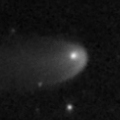
|
Now it is between 15.8 mag (Sept. 3, Taras Prystavski) and 18.5 mag (Sept. 2, M. Jaeger, E. Prosperi, S. Prosperi, W. Vollmann). It brightened up to 13 mag from 2011 to 2012. It will be fading after this, but it keeps brighter than 18 mag until 2015 spring.
Date(TT) R.A. (2000) Decl. Delta r Elong. m1 Best Time(A, h)
Sept.27 3 51.93 -4 44.9 8.247 8.861 125 16.9 3:30 (180, 60)
Oct. 4 3 49.72 -4 48.7 8.203 8.897 131 16.9 3:01 (180, 60)
|

|
Now it is 16.1 mag (Aug. 31, Taras Prystavski). It will brighten up to 16 mag in winter, and will be observable in excellent condition.
Date(TT) R.A. (2000) Decl. Delta r Elong. m1 Best Time(A, h)
Sept.27 7 56.82 17 1.2 4.396 4.089 65 17.0 4:18 (231, 20)
Oct. 4 8 2.74 16 33.6 4.298 4.086 71 16.9 4:07 (229, 22)
|
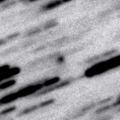
|
Now it is 17.1 mag (Sept. 13, A. Klotz, F. Kugel, C. Rinner, J. Nicolas). It will keep 16-17 mag for a long time from 2014 summer to early 2016. It keeps observable in excellent condition until autumn in the Southern Hemisphere. It keeps low in the Northern Hemisphere.
Date(TT) R.A. (2000) Decl. Delta r Elong. m1 Best Time(A, h)
Sept.27 17 21.26 -23 22.5 2.516 2.499 77 17.0 19:24 (100, 56)
Oct. 4 17 31.10 -23 18.5 2.576 2.473 72 17.0 19:30 ( 96, 51)
|

|
Now it is 17.1 mag (Aug. 30, iTelescope Observatory, Mayhill). It keeps observable at 17-18 mag from August to November in excellent condition in the Northern Hemisphere. It locates somewhat low in the Southern Hemisphere.
Date(TT) R.A. (2000) Decl. Delta r Elong. m1 Best Time(A, h)
Sept.27 6 41.14 22 46.3 1.127 1.430 84 17.0 4:18 (211, 25)
Oct. 4 6 59.27 22 42.5 1.108 1.452 86 17.0 4:07 (211, 25)
|

|
It will brighten up to 16 mag and will be observable in excellent condition in winter. No observations have been reported since 2013 October.
Date(TT) R.A. (2000) Decl. Delta r Elong. m1 Best Time(A, h)
Sept.27 9 3.99 16 0.1 2.511 2.016 49 17.3 4:18 (243, 9)
Oct. 4 9 19.77 15 5.7 2.451 2.011 52 17.2 4:07 (243, 10)
|
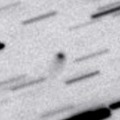
|
Now it is 16.8 mag (Sept. 11, E. Bryssinck). It keeps observable at 18 mag for a long time from 2013 to 2016. It keeps locating high in the Northern Hemisphere. It keeps locating very low in the Southern Hemipshere.
Date(TT) R.A. (2000) Decl. Delta r Elong. m1 Best Time(A, h)
Sept.27 16 46.45 45 36.1 6.636 6.468 76 17.2 19:24 (150, 0)
Oct. 4 16 46.16 45 1.0 6.680 6.470 73 17.2 19:30 (145, -4)
|

|
Now it is 17.4 mag (Aug. 2, iTelescope Observatory, Siding Spring). It keeps observable at 17-18 mag from summer to winter in excellent condition in the Northern Hemisphere. It locates somewhat low in the Southern Hemisphere.
Date(TT) R.A. (2000) Decl. Delta r Elong. m1 Best Time(A, h)
Sept.27 6 40.88 18 8.4 2.198 2.317 83 17.2 4:18 (213, 30)
Oct. 4 6 49.10 18 6.2 2.138 2.341 88 17.2 4:07 (211, 31)
|
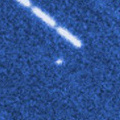
|
Now it is 19.3 mag (Sept. 19, D. Herald). It will brighten up to 9 mag in 2015 spring. But the condition of this apparition is bad. In the Southern Hemisphere, it keeps observable until winter when the comet will be 13 mag. But it is not observable around the brightest days. In the Northern Hemispehre, it keeps extremely low and hard to observe. It will be observable after 2015 autumn when the comet will fade out.
Date(TT) R.A. (2000) Decl. Delta r Elong. m1 Best Time(A, h)
Sept.27 20 15.88 -53 35.1 2.322 2.777 106 17.4 19:52 ( 0, 72)
Oct. 4 20 15.57 -52 48.8 2.356 2.729 100 17.3 19:30 ( 3, 72)
|

|
It will brighten up to 14 mag around the perihelion passage in 2019. In 2014, it will be observable in excellent condition at 17 mag from summer to winter in the Northern Hemisphere. It locates extremely low in the Southern Hemisphere. However, it is faint as 18.9 mag now, much fainter than this ephemeris (Aug. 5, Ken-ichi Kadota).
Date(TT) R.A. (2000) Decl. Delta r Elong. m1 Best Time(A, h)
Sept.27 3 24.81 35 26.7 11.882 12.472 124 17.3 3:03 (180, 20)
Oct. 4 3 23.25 35 39.0 11.769 12.444 130 17.3 2:34 (180, 19)
|
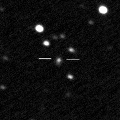
|
Now it is 16.5 mag (Aug. 25, A. Baransky, B. Baransky). Brightening furthermore after the perihelion passage. It will be observable at 17-18 mag in good condition until November.
Date(TT) R.A. (2000) Decl. Delta r Elong. m1 Best Time(A, h)
Sept.27 20 54.91 -10 35.8 3.142 3.855 129 17.4 20:30 (180, 66)
Oct. 4 20 55.42 -10 46.3 3.246 3.876 122 17.5 20:04 (180, 66)
|

|
Now it is 17.6 mag (Sept. 14, Mitsunori Tsumura). It has brightened in outburst up to 14 mag twice, in 2006 January and 2011 May. It will pass the perihelion in 2015. It keeps observable at 17 mag for a long time after this.
Date(TT) R.A. (2000) Decl. Delta r Elong. m1 Best Time(A, h)
Sept.27 20 51.39 -14 45.4 5.238 5.902 127 17.5 20:27 (180, 70)
Oct. 4 20 51.16 -14 51.8 5.324 5.896 120 17.6 19:59 (180, 70)
|
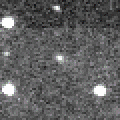
|
Now it is 17.9 mag (Aug. 5, Ken-ichi Kadota). It keeps observable at 17-18 mag in good condition from July to October.
Date(TT) R.A. (2000) Decl. Delta r Elong. m1 Best Time(A, h)
Sept.27 21 53.72 -14 23.7 1.623 2.491 142 17.5 21:29 (180, 69)
Oct. 4 21 53.15 -13 58.7 1.678 2.489 135 17.6 21:01 (180, 69)
|

|
First return of a new periodic comet discovered in 2004. Now it is 18.4 mag (Sept. 14, Toshiyuki Takahashi). It will be observable in excellent condition from autumn to winter. It is expected to brighten very rapidly, and brighten up to 16 mag from November to December.
Date(TT) R.A. (2000) Decl. Delta r Elong. m1 Best Time(A, h)
Sept.27 21 6.77 10 42.6 0.676 1.544 132 17.9 20:42 (180, 44)
Oct. 4 21 11.01 9 52.7 0.672 1.511 128 17.6 20:19 (180, 45)
|
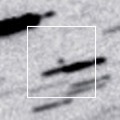
|
It will pass close to the earth from spring to summer in 2016, and it is expected to be observable at 6-7 mag in good condition. Now it is 18.3 mag (Aug. 25, K. Sarneczky). In the Northern Hemispehre, it keeps observable in good condition until 2015 spring when the comet will brighten up to 15.5 mag. In the Southern Hemisphere, it keeps low for a long time until 2016 spring.
Date(TT) R.A. (2000) Decl. Delta r Elong. m1 Best Time(A, h)
Sept.27 7 1.64 32 48.1 6.622 6.534 80 17.8 4:18 (210, 14)
Oct. 4 7 1.39 33 3.6 6.441 6.475 87 17.7 4:07 (207, 16)
|

|
First return of a new periodic comet discovered in 2005. It was expected to be observable at 17 mag for a long time from 2013 to 2014. However, it has not been recovered yet. Actually, it is much fainter than predicted, fainter than 20.5 mag (Aug. 1, Jean-Francois Soulier).
Date(TT) R.A. (2000) Decl. Delta r Elong. m1 Best Time(A, h)
Sept.27 22 37.84 -13 35.0 2.500 3.418 151 17.7 22:13 (180, 69)
Oct. 4 22 35.16 -13 56.1 2.565 3.429 144 17.7 21:43 (180, 69)
|
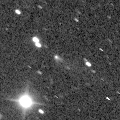
|
It was observed at 17 mag from 2013 to early 2014. It will be observable at 17.5 mag in good condition again from autumn to winter in 2014.
Date(TT) R.A. (2000) Decl. Delta r Elong. m1 Best Time(A, h)
Sept.27 8 0.34 17 34.9 3.457 3.168 65 17.7 4:18 (231, 19)
Oct. 4 8 7.94 17 1.7 3.378 3.179 70 17.7 4:07 (229, 21)
|

|
It keeps 17.5 mag and will be observable in excellent condition from autumn to winter in the Northern Hemisphere. It locates somewhat low in the Southern Hemisphere. However, it is actually 19.7 mag, much fainter than predicted (Sept. 3, Jean-Francois Soulier).
Date(TT) R.A. (2000) Decl. Delta r Elong. m1 Best Time(A, h)
Sept.27 6 55.05 21 51.4 1.392 1.581 80 17.7 4:18 (215, 25)
Oct. 4 7 11.14 20 14.6 1.356 1.597 83 17.7 4:07 (215, 26)
|

|
Now it is 18.2 mag (Aug. 4, L. Arnold). It will be observable at 17.5 mag in excellent condition from autumn to winter.
Date(TT) R.A. (2000) Decl. Delta r Elong. m1 Best Time(A, h)
Sept.27 1 45.79 16 9.0 1.541 2.476 152 17.9 1:25 (180, 39)
Oct. 4 1 43.47 15 58.0 1.493 2.458 160 17.8 0:55 (180, 39)
|

|
It was observed at 17.5 mag in early 2013. It was predicted to be observable at 17.5 mag again from spring to summer in 2014. But actually, it is 20.6 mag (June 21, Hidetaka Sato), much fainter than predicted by 3 mag.
Date(TT) R.A. (2000) Decl. Delta r Elong. m1 Best Time(A, h)
Sept.27 19 14.52 -20 45.1 2.855 3.243 103 22.6 19:24 (151, 74)
Oct. 4 19 19.17 -20 56.6 2.975 3.267 97 22.8 19:30 (131, 70)
|
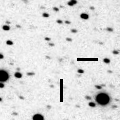
|
It was discovered in 1819, and re-discovered in 2003. Although it was predicted to be extremely faint as 26 mag, it unusually brightened up to 17.5 mag in outburst in 2013 July (July 6, Hidetaka Sato). However, no observations have been reported since mid July. It will pass the perihelion in 2014 August, and will approach to the sun down to 0.96 a.u. The brightness is predicted to be 23 mag at best. However, if the cometary activity continues, it may be observed brighter. Ken-ichi Kadota reported it was not detected, fainter than 16.3 mag, on May 21.
Date(TT) R.A. (2000) Decl. Delta r Elong. m1 Best Time(A, h)
Sept.27 10 9.54 14 13.9 1.713 1.052 34 23.2 4:18 (254, -2)
Oct. 4 10 34.90 12 12.2 1.755 1.095 34 23.3 4:07 (257, -3)
|
|
![]()
 284P/2013 J1 ( McNaught )
284P/2013 J1 ( McNaught ) C/2014 A4 ( SONEAR )
C/2014 A4 ( SONEAR ) 134P/Kowal-Vavrova
134P/Kowal-Vavrova C/2014 AA52 ( Catalina )
C/2014 AA52 ( Catalina ) C/2013 V2 ( Borisov )
C/2013 V2 ( Borisov ) C/2011 KP36 ( Spacewatch )
C/2011 KP36 ( Spacewatch ) C/2013 V4 ( Catalina )
C/2013 V4 ( Catalina ) 110P/Hartley 3
110P/Hartley 3 201P/LONEOS
201P/LONEOS 16P/Brooks 2
16P/Brooks 2 106P/Schuster
106P/Schuster C/2014 Q1 ( PanSTARRS )
C/2014 Q1 ( PanSTARRS ) 246P/2010 V2 ( NEAT )
246P/2010 V2 ( NEAT ) C/2009 F4 ( McNaught )
C/2009 F4 ( McNaught ) 269P/2012 R2 ( Jedicke )
269P/2012 R2 ( Jedicke ) 44P/Reinmuth 2
44P/Reinmuth 2 304P/2014 L4 ( Ory )
304P/2014 L4 ( Ory ) 70P/Kojima
70P/Kojima C/2012 K8 ( Lemmon )
C/2012 K8 ( Lemmon ) 191P/McNaught
191P/McNaught 19P/Borrelly
19P/Borrelly C/2010 U3 ( Boattini )
C/2010 U3 ( Boattini ) P/2013 G1 ( Kowalski )
P/2013 G1 ( Kowalski ) 174P/(60558) 2000 EC98 ( Echeclus )
174P/(60558) 2000 EC98 ( Echeclus ) 303P/2014 L1 ( NEAT )
303P/2014 L1 ( NEAT ) 305P/2014 N1 ( Skiff )
305P/2014 N1 ( Skiff ) C/2013 X1 ( PanSTARRS )
C/2013 X1 ( PanSTARRS ) P/2005 L1 ( McNaught )
P/2005 L1 ( McNaught ) 119P/Parker-Hartley
119P/Parker-Hartley 11P/Tempel-Swift-LINEAR
11P/Tempel-Swift-LINEAR P/2014 M4 ( PanSTARRS )
P/2014 M4 ( PanSTARRS ) 280P/2013 C1 ( Larsen )
280P/2013 C1 ( Larsen ) 289P/Blanpain
289P/Blanpain![]()

















































